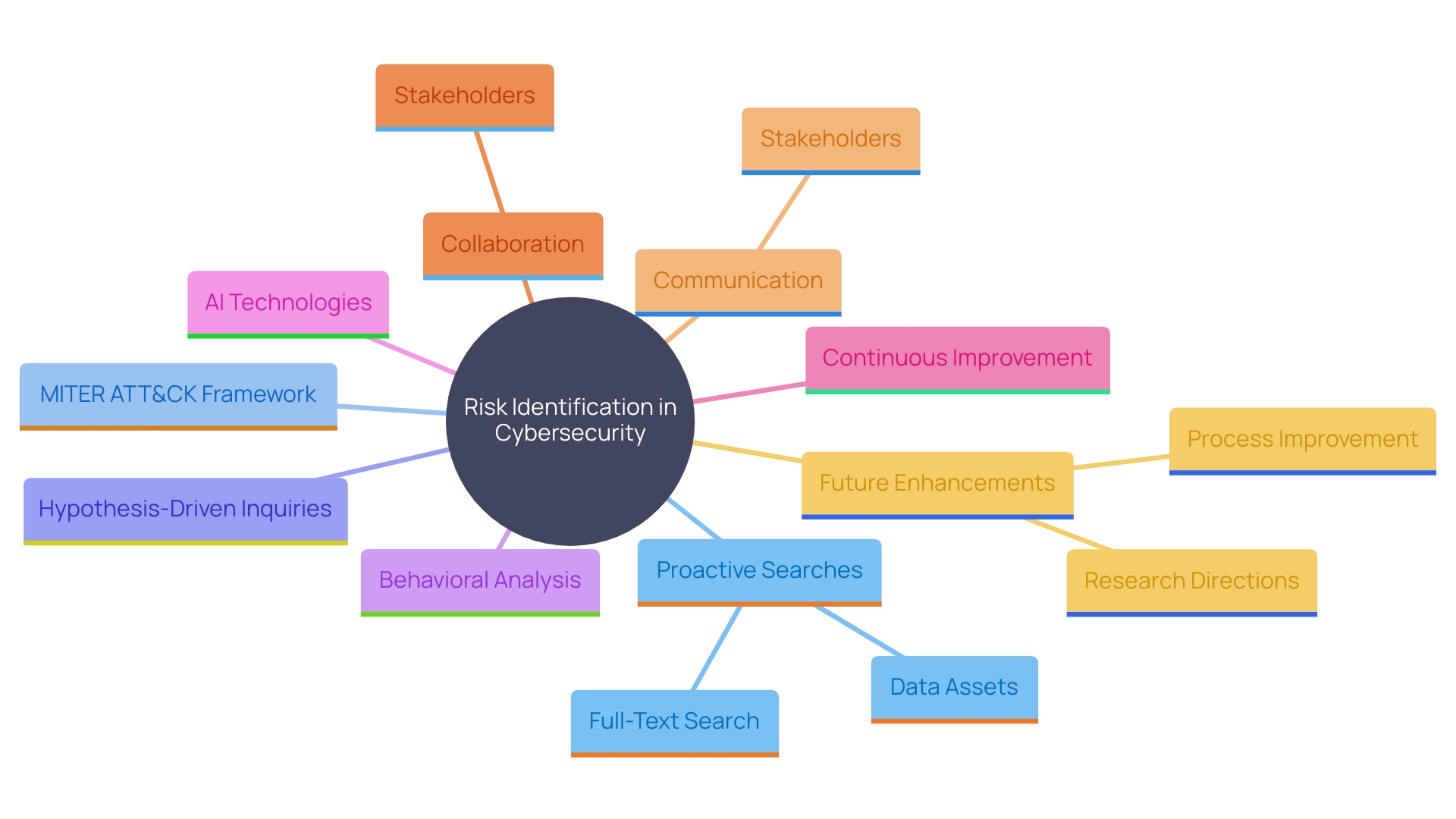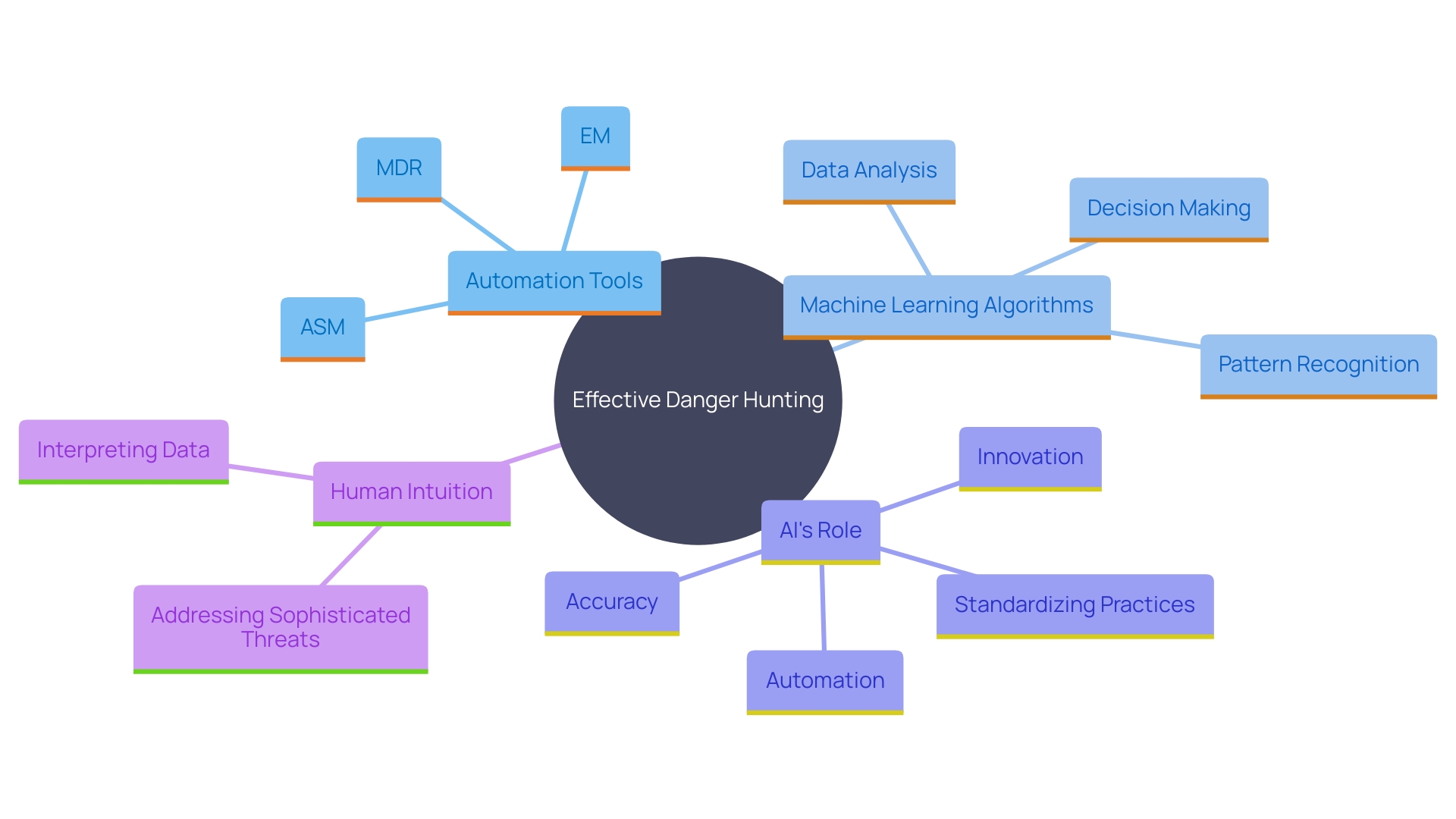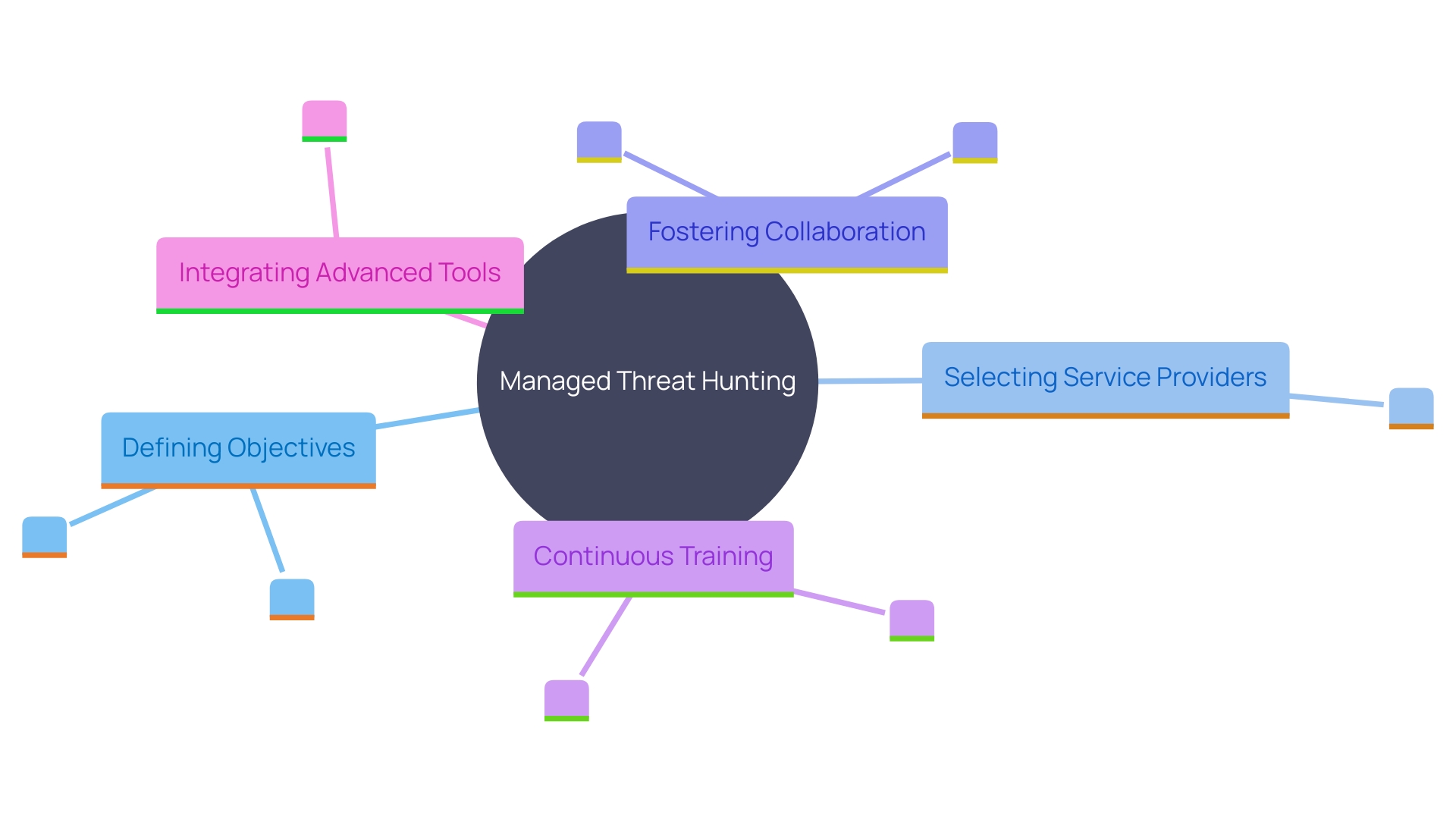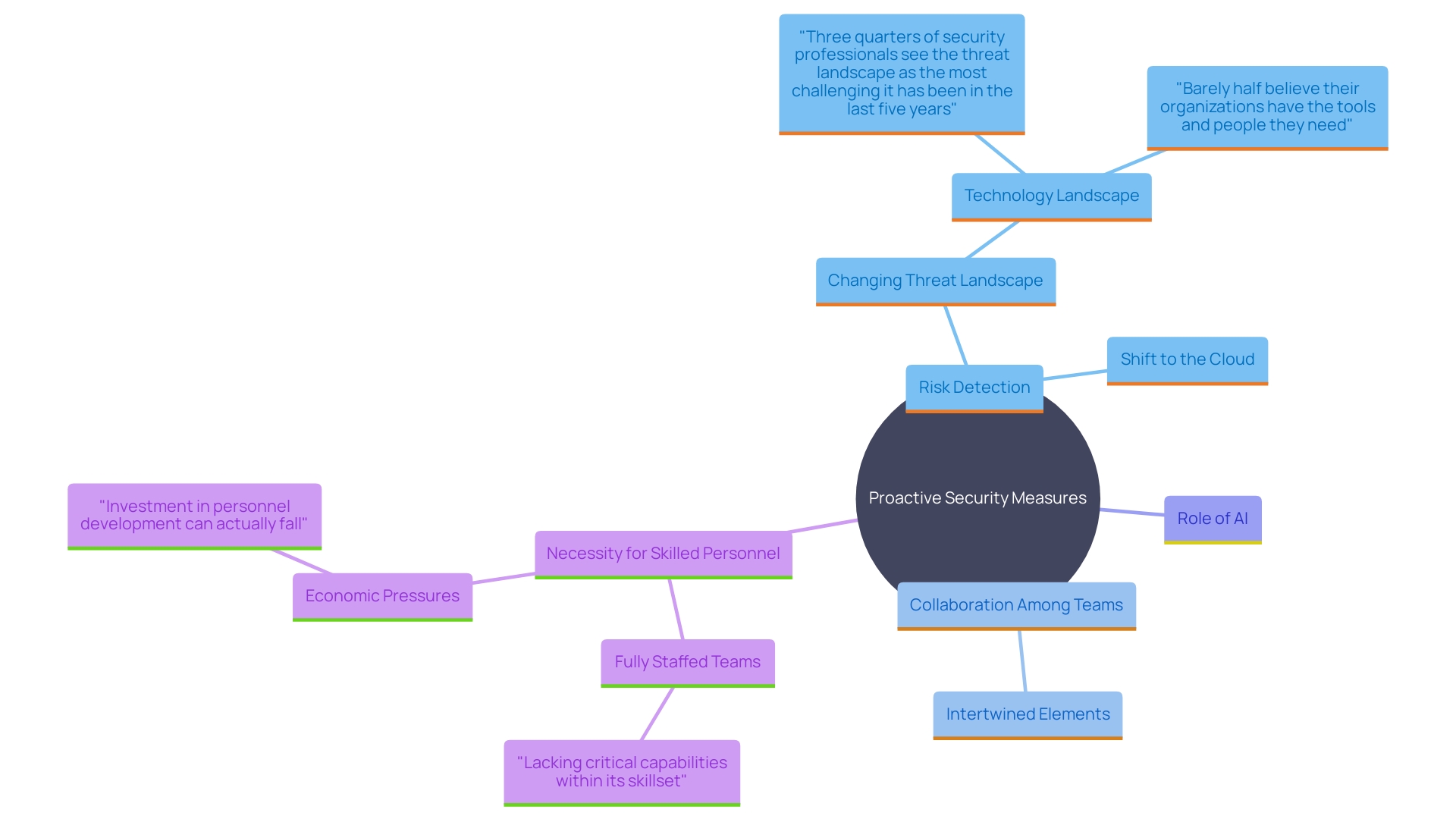Introduction
In today's rapidly evolving digital landscape, cybersecurity has become a paramount concern for organizations of all sizes. Managed threat hunting emerges as a crucial strategy, providing a proactive approach to identifying and mitigating potential threats before they can cause significant damage. Leveraging the expertise of seasoned threat hunters, companies can enhance their security posture, gaining the ability to detect threats early and respond effectively, thereby reducing the risk of exploitation.
This article delves into the key benefits of managed threat hunting, explores various methodologies, highlights the integration of advanced technologies with human expertise, and offers best practices for implementation. The comprehensive integration of threat hunting into broader cybersecurity strategies is essential for establishing a robust defense mechanism, emphasizing the importance of a proactive, collaborative, and continuously improving security framework.
Key Benefits of Managed Threat Hunting
Managed risk detection provides organizations with a proactive strategy for cybersecurity, allowing them to remain ahead of possible dangers. By utilizing skilled risk hunters, companies can identify dangers early, significantly minimizing the period for attackers to exploit weaknesses. This is crucial, as analysis reveals that organizations only prevent 6 out of every 10 attacks. Early detection is pivotal in improving incident response times and reducing overall risk.
For instance, United Airlines, with its extensive network of OT devices across various hubs, employed managed risk detection to gain a clear understanding of their OT network. Before this, the group responsible for protection faced challenges in recognizing all the devices within their network, leaving possible weaknesses unaddressed. By utilizing managed risk detection services, United Airlines could improve their security stance and more effectively safeguard their operations from cyber risks.
Access to advanced danger intelligence and tools, often beyond the capability of internal groups, further enhances the effectiveness of managed hunting for risks. As Chris Peters, the principal architect for operational technology and industrial control system cybersecurity at United Airlines, emphasized, the ability to detect threats rapidly has been transformative. This enables teams to concentrate on strategic initiatives instead of only responding to alerts, thus promoting a more adaptive and resilient operation.
Furthermore, the trend towards Managed Detection and Response (MDR) services is gaining momentum, with organizations of all sizes acknowledging the critical role of time in protective measures. MDR services enable quicker and more precise recognition of dangers, allowing companies to prevent attacks before they cause significant damage. The utilization of AI and automation in risk detection further improves precision and effectiveness, simplifying the management of danger exposure and enhancing overall security results.
Understanding Threat Hunting Methodologies
Approaches for identifying risks combine proactive searches for dangers with frameworks such as MITER ATT&CK to optimize and improve efforts. Security teams employ hypothesis-driven inquiries, behavioral analysis, and intelligence correlation to uncover sophisticated dangers. A study by Census emphasizes that dependable risk information is essential for successful risk tracking and can greatly enhance the precision and effectiveness of these initiatives. Emerging AI technologies are instrumental in this process, providing enhanced automation and accuracy that help standardize threat-hunting practices.
Comprehending attacker tactics, techniques, and procedures (TTPs) is essential for anticipating and recognizing dangers that evade conventional detection mechanisms. The ATT&CK® Evaluations Managed Services (2024) offers actionable insights by evaluating defensive capabilities against real-world adversary behaviors, emphasizing the importance of continuous improvement and collaboration.
Case studies demonstrate the value of identifying unique indicators in attacks to connect the dots across incidents, forming a comprehensive view of attacker behavior. 'This method is additionally backed by forensic inquiries, which utilize sensor suites to gather information from impacted systems, enhancing long-term observation and risk detection abilities.'. Enhanced monitoring and communication with stakeholders, including employees, customers, and law enforcement, are also critical components of an effective threat-hunting strategy.

Utilizing Advanced Technologies and Human Expertise
The integration of advanced technologies with human expertise is fundamental for effective danger hunting. Automation tools streamline data collection and preliminary analysis, freeing up hunters to tackle complex investigative tasks. Machine learning algorithms can detect patterns and anomalies indicative of security breaches. This hybrid approach is necessary as cyber dangers have become too sophisticated for human-scale efforts alone, with studies showing internet-connected systems attacked every 39 seconds, a rate that has grown by over 60% in recent years.
AI-powered systems enhance threat-hunting efficiencies through improved automation and accuracy. Based on a Census report, dependable danger intelligence is essential for hunters to operate efficiently, with AI anticipated to assist in standardizing danger-hunting practices. This corresponds with findings that half of U.S. security hunters use automated tools like attack surface management and managed detection responses.
President Biden's recent executive order on AI underscores the importance of harnessing AI's power while managing its risks, including new standards for safety and privacy. Ai's potential to enhance risk detection and response capabilities is clear, yet human intuition and analytical skills remain essential for interpreting findings and making informed decisions.

Best Practices for Implementing Managed Threat Hunting
Effective implementation of managed threat hunting hinges on a structured approach. Organizations should start by defining clear objectives and ensuring alignment with their existing security strategies. Selecting a service provider with proven expertise and a deep understanding of the organization’s environment is crucial. For example, the Unit 42 Incident Response and Threat Intelligence groups at Palo Alto Networks have demonstrated success by assisting hundreds of organizations in minimizing operational downtime and recovering quickly from cyberattacks. Consistent interaction between internal groups and external partners must be established to ensure transparency and collaboration.
Continuous training and knowledge sharing are essential to enhance the effectiveness of threat-hunting initiatives. The Stairwell Threat Research group, for instance, emphasizes staying updated with the latest thought leadership and research from various experts. This approach not only enhances the preparedness of the internal teams but also utilizes the insights from external experts to stay ahead of emerging risks.
Statistics indicate that organizations only prevent 6 out of every 10 attacks, underscoring the importance of a comprehensive risk exposure management strategy. Oversaw risk detection, backed by strong security information and ongoing enhancement, can reduce these dangers effectively. As mentioned, false positives are a considerable challenge; however, the incorporation of AI in danger detection can standardize practices and enhance precision. 'Half of the security hunters in the US have already transitioned to employing advanced tools such as attack surface management and managed detection and response powered by automation, reflecting the evolving landscape of cybersecurity.'.

Integrating Threat Hunting into Cybersecurity Strategies
Incorporating proactive security measures into wider cybersecurity strategies creates a thorough defense system vital for contemporary organizations. Integrating risk detection as a fundamental role within the Security Operations Center (SOC) guarantees a proactive strategy to security, emphasizing the foresight of dangers rather than just responding to them. Collaboration with incident response and vulnerability management teams simplifies the workflow for identifying and addressing risks, significantly boosting the organization's overall resilience.
The rise in cyber-attacks, which grew by 38% in 2022, highlights the necessity of strong risk detection integration. For example, critical infrastructure sectors such as financial services and energy have incurred millions in costs due to data breaches. Talos Incident Response highlights that risk searching should be hypothesis-driven, utilizing current intelligence on dangers to pinpoint possible compromises within the network.
Skilled security experts emphasize the significance of comprehending attacker motives and necessary defenses, sharing anecdotes and experiences to demonstrate effective hunting strategies. Proficient danger hunters not only look for malicious actors but also promote investments in technologies that enhance detection and response capabilities. However, a lack of skilled staff remains a significant challenge, with many respondents from the SANS 2023 Threat Hunting survey seeking more training and support from management.
OODA's team of international experts also provides advanced intelligence, strategy, and planning support, emphasizing the need for coordinated efforts in risk management. The use of AI in risk hunting provides significant benefits, such as automation and precision, which can assist in standardizing practices and decreasing false positives. Significantly, 50% of U.S. security hunters have adopted AI-powered tools such as attack surface management and managed detection and response, reflecting a national security-driven approach to cybersecurity.
The Office of Management and Budget's (OMB) requirement for agencies to achieve advanced logging levels by August 2023 further underscores the significance of thorough event logging in detecting and responding to risks. As of the deadline, only three out of 23 agencies met these requirements, indicating significant room for improvement in the federal government's ability to detect, investigate, and resolve cyber issues.
In summary, incorporating risk detection into cybersecurity strategies necessitates a cultural change towards proactive protective measures, collaboration among defense teams, and investment in skilled personnel and advanced technologies. This holistic approach is crucial for building a resilient security framework capable of withstanding the evolving landscape of cyber threats.

Conclusion
Managed threat hunting is crucial in today's cybersecurity environment, providing organizations with a proactive strategy to detect and mitigate threats before they escalate. Leveraging expert threat hunters and advanced technologies enables companies to enhance their security posture, achieve early detection, and ensure rapid incident response. This proactive capability is vital, especially as organizations currently prevent only a fraction of potential attacks, as exemplified by United Airlines' improved operational security through effective threat hunting.
The methodologies utilized in threat hunting underscore the importance of a structured approach that integrates threat intelligence and behavioral analysis. Frameworks like MITRE ATT&CK empower security teams to anticipate sophisticated threats that might evade traditional detection mechanisms. Furthermore, the combination of human expertise with advanced technologies, such as AI and automation, amplifies the effectiveness of threat-hunting initiatives.
Successful implementation necessitates careful planning and collaboration between internal teams and external partners. Establishing clear objectives, selecting experienced service providers, and promoting continuous training are essential steps. As cyber-attacks continue to rise, integrating threat hunting into broader cybersecurity strategies becomes imperative.
By embedding threat hunting within Security Operations Centers and aligning it with incident response and vulnerability management, organizations can create a robust defense mechanism.
In conclusion, the integration of managed threat hunting into cybersecurity frameworks is vital for effective asset protection. This proactive and collaborative approach, bolstered by advanced technologies and skilled personnel, equips organizations to navigate the complexities of the digital threat landscape with resilience and agility.




